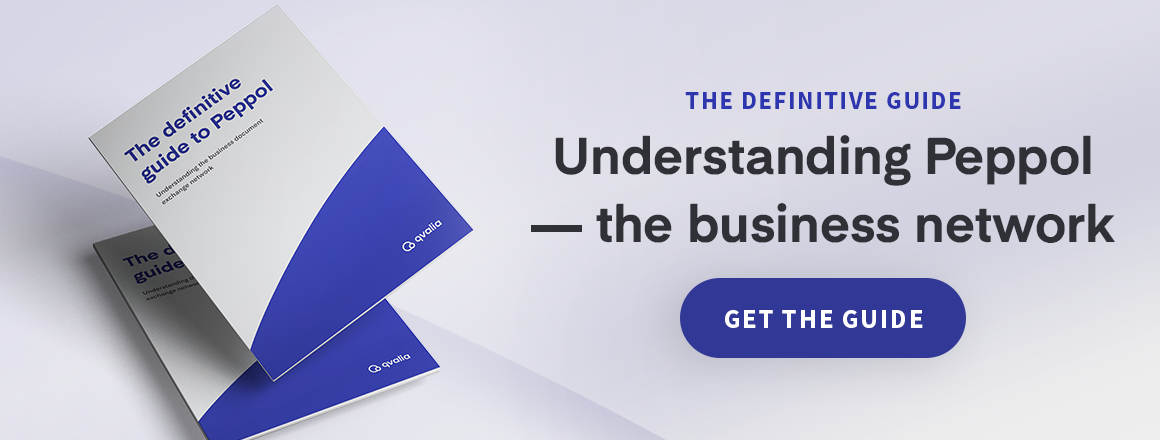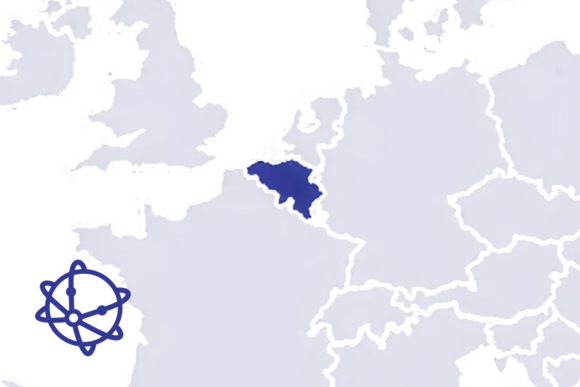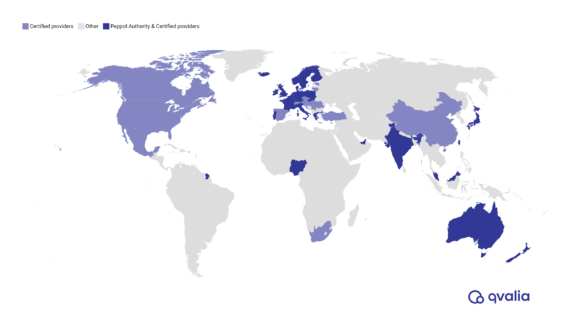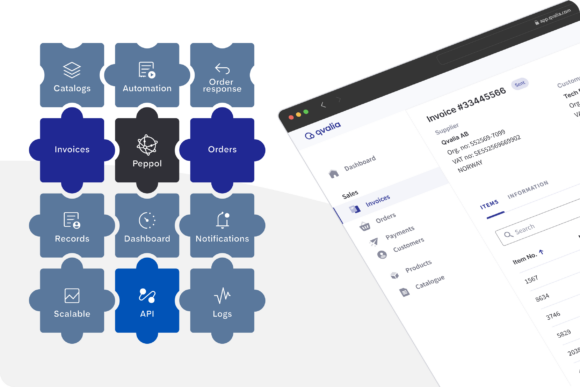
The Peppol network opens the door to more efficient and consistent international transactions, which is why so many businesses are embracing this new system of B2B e-commerce communication.
It’s also resulted in many companies quickly learning how to use the network to its fullest potential, such as picking up financial platforms that support Peppol access points and learning more about how the network functions.
One of the most common questions is how the types of messages work in Peppol and what type of transactions and business documents can be exchanged. While all messages through the Peppol network run on some type of XML file format signed with a Peppol ID, the structure of the data varies depending on the type of business document being exchanged, which can range from:
- E-invoices
- Purchase orders
- Product or service catalogs
- Punch-out forms
- Responses
All these messaging types allow the network to be accessible by multiple companies and regions with different procurement needs. Let’s go over these message types and how they contribute to a more efficient procurement process for everybody involved.
Business documents in Peppol
Peppol BIS Billing 3.0
BIS Billing is the general e-invoice format for Peppol messages, and it’s naturally the most common format seen in the network. It can be used for standard sales invoicing as well as negative invoicing if the situation requires it.
Like other invoices, Peppol e-invoices contain the usual sales information like:
- A list of products and services provided and their quantities
- Price and total charges
- A purchase order reference code
This format also supports credit notes, where negative amounts can be recorded in the document and notated using plus signs and minus signs denoting credit and debit.
More about Peppol BIS Billing.
Peppol BIS Invoice Response 3.1
B2B transactions have always been a two-way lane for communication, and this invoice response type allows recipients of Peppol invoices to contact senders regarding the status of the transactions.
These messages can be either business-level responses for issues like delivery disputes or incorrect numbers on the document or transport acknowledgments for basic updates on the delivery process.
More about Peppol BIS Invoice Response.
Peppol BIS Order Only 3.2
Buyers can send sellers this simple electronic order through the Peppol network. It will contain a more basic structure of:
- A list of products and services (and inventory information if the orders are in catalogs)
- Accounting information
- Invoice information
- Some details on transport
- Tax data like VAT, GST, and sales tax
What follows is typically an expected order value and a tax number in case the charges need to be reversed.
More about Peppol BIS Order Only.
Peppol BIS Ordering 3.2
BIS Ordering 3.2, which shares the same requirements as BIS Order Only, allows for two-way communication in the event that buyers need to send e-orders to sellers, who can then respond with either an accept message, a reject, or a request to make changes.
More about Peppol BIS Ordering.
Peppol BIS Catalog with Response 3.1
Much like how a store can send out brochures advertising its latest wares, a seller can send out these structured product and service catalogs out to potential buyers and await for direct responses. The contents of these messages may contain:
- Description of products and services on offer
- Product comparisons
- Packaging and storage details
- Tax information
No information specific to procurement is necessary for this format, as it mainly aims to refer buyers to relevant catalogs and sellers.
More about Peppol BIS Catalog with Response.
Peppol BIS Catalog without Response 3.1
As its name suggests, this catalog message is similar to the previous type but does not support response messages. It is primarily intended to inform buyers on products and services, contract details, and framework agreements.
More about Peppol BIS Catalog without Response.
Peppol BIS Despatch Advice 3.1
Whenever the seller needs to send out notifications of orders being packaged, cross-checked, delivered, and fulfilled, it will produce this message format in the Peppol network with the following details:
- How orders are packaged and delivered
- The contents of the order
- Dates and times orders were received at certain checkpoints like warehouses and stores
Special cases like orders with outstanding goods or those with multiple endpoints are also supported under the BIS Despatch Advice 3.1.
More about Peppol BIS Despatch Advice.
Peppol BIS Punch Out 3.1
You can think of Punch Outs as dynamic shopping carts in the context of B2B e-commerce. Buyers can search through the online catalogs of various suppliers and add their own orders to a shopping cart, for example within the buyer’s own procurement system. A punch out message is then produced and sent to the seller without even consulting the seller’s own website or checkout solution (and its potential additional fees).
The result is a purchasing experience that’s less complicated and easier to use since buyers can quickly compare prices and product offerings.
More about Peppol BIS Punch Out.
Peppol BIS Order Agreement 3.0
Suppliers and client businesses often have to reach formal agreements about their relationship. A BIS Order Agreement is the basis of such an arrangement, as it contains order information and documentation produced by the seller about the transaction after it’s been made.
These agreements can also set up a framework where multiple purchases can be made over time.
Moe about Peppol BIS Order Agreement.
Peppol BIS Message Level Response 3.0
B2B transactions have many details that need to be confirmed and validated. Because deviations are common here, a Message Level Response is intended to allow recipients and clients to reply to senders about any changes in the transaction. For example, a mistake or deviation in the order process can be addressed this way:
- Transport acknowledgments are essentially ordered updates, such as a message confirming successful delivery.
- Message level responses reports on missing or incorrect order information.
- Business level responses report on other order issues, such as when the requested products were out of stock.
More about Peppol BIS Message Level Response.
For more information about Peppol, usage, infrastructure messages, and use cases, download this free guide to Peppol.
Get a smarter access point
Don’t make the mistake of thinking the Peppol network is complicated to work with. Companies in all industries are rapidly adopting Peppol to upgrade their finance processes.
The secret to getting corporate finances in order is to use automated financial data management. Given that invoices, purchase orders, and other documents are incredibly data-heavy and managed on a rule-based basis, there’s a lot of potential to apply software and automation.
That’s where platforms like Qvalia come in. If you’re serious about international procurement through Peppol and need help optimizing B2B e-commerce, book a demo or start your free Qvalia trial today.



